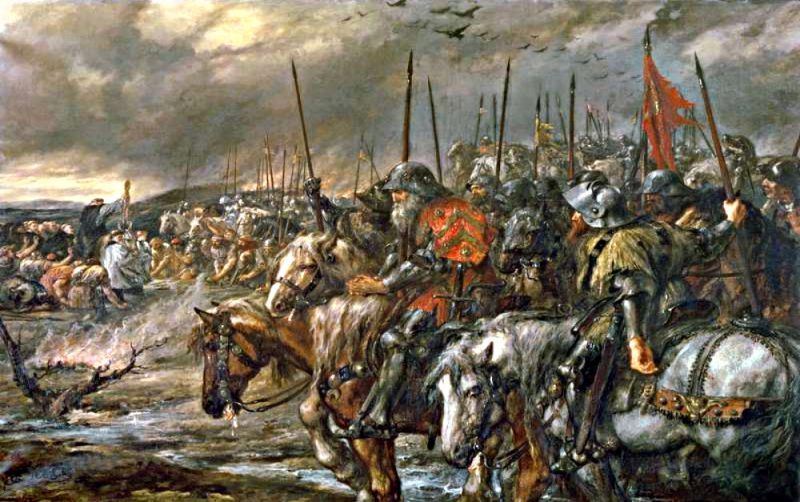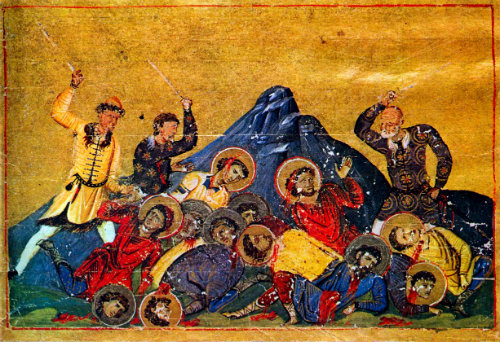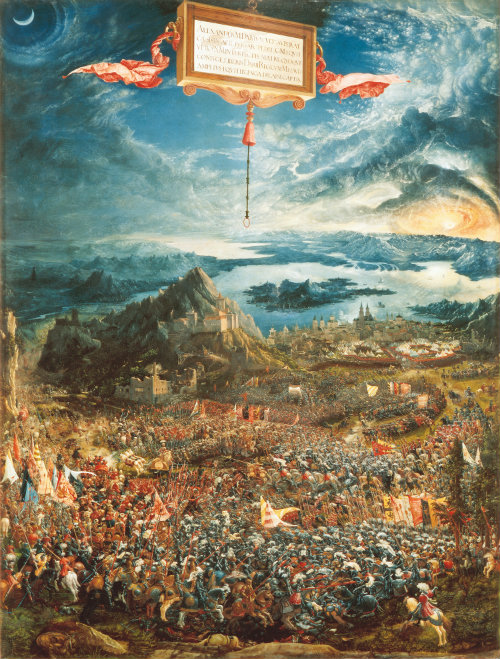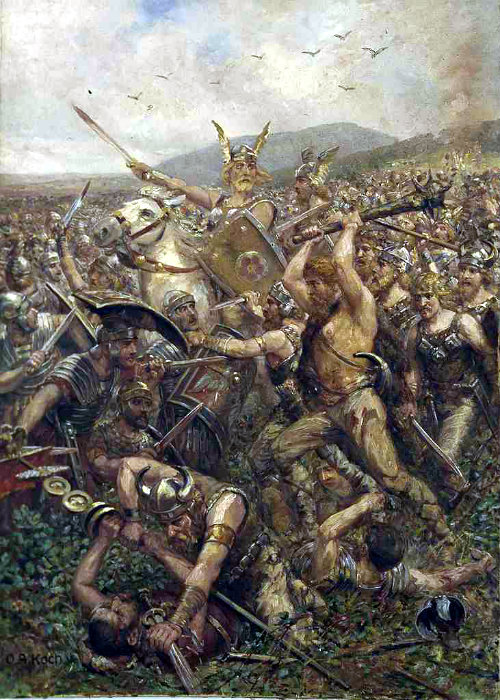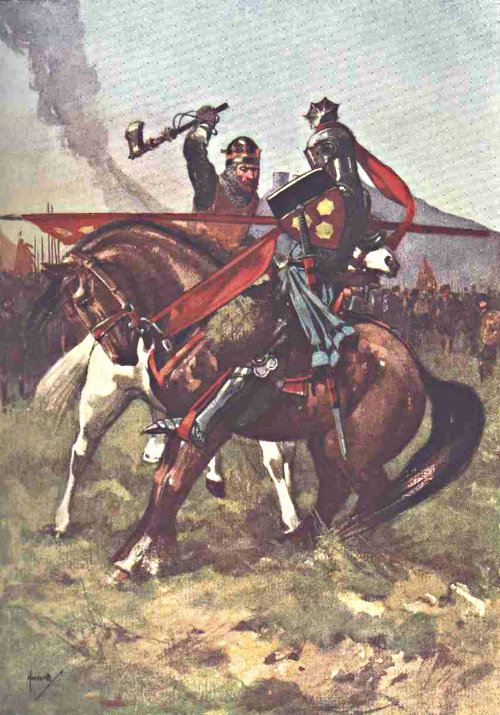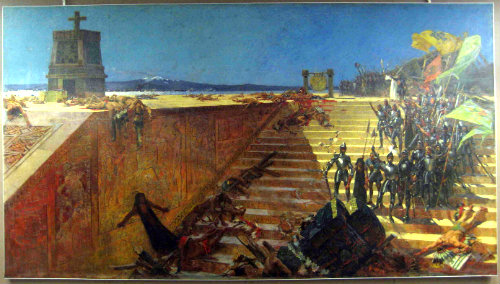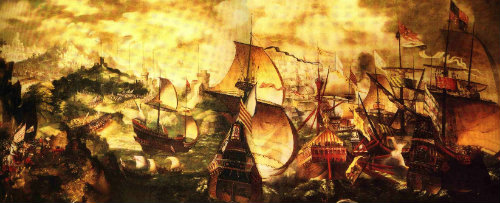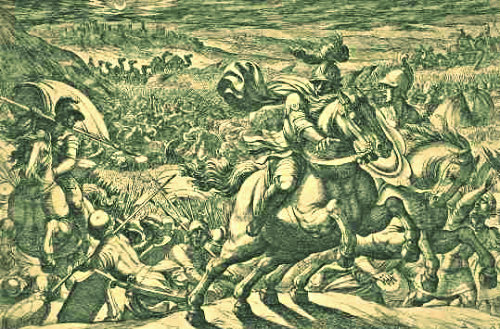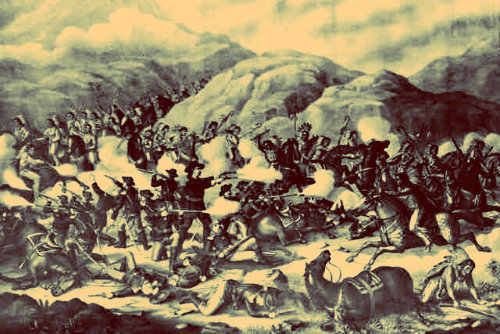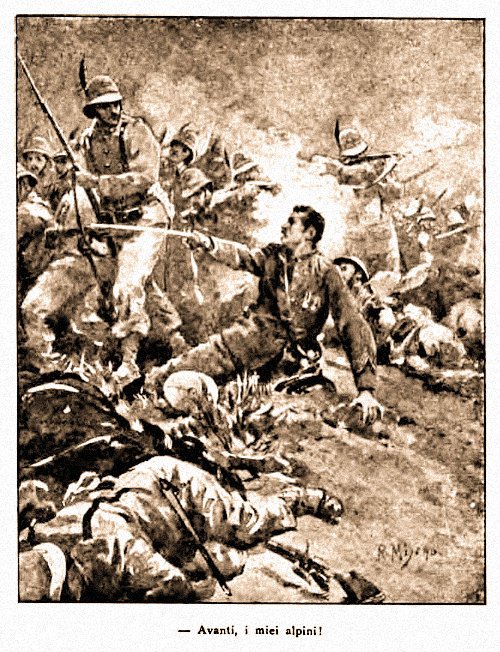For every victory, there is a defeat. Some are worse than others, however. Some victories are brought about by military blunders committed by the other side. This top ten list is concerned with the factors that brought devastating defeat – from foolhardy advice to disastrous mistakes, cheap military equipment to poor leadership…
So, let the TOP TEN MILITARY DISASTERS IN WAR HISTORY commence!
The Battle of Pliska [811]
The Battle of Pliska was actually a series of battles between Emperor Nicephorus I Genik of the Byzantine Empire and Khan Krum, leader of Bulgaria.
Nicephorus marched into Bulgaria bringing with him a force of 80,000 men. He ignored Krum’s offer of peace and sacked Pliska, the Bulgar capital. He looted the city with extreme brutality, giving the Bulgarian army time to block the passes in the Balkan mountains. Pliska’s big mistake was failing to scout ahead before sending his army into the mountain passes after the sack of the city. Khan Krum ambushed the Byzantine emperor in the mountains and he and his army were trapped.
Nicephorus was killed, along with most of his men, and Krum had the Emperor’s skull encased in silver and made into a drinking cup.
The Battle of Issus [333 BC]
In 333 BC, the Achaemenid Persian Darius III, who proclaimed himself the King of Kings, led his huge army into battle against a much smaller force led by Alexander the Great, who was still very early in his military career.
Darius III had a number of difficulties, not least of which was supplying his huge force with enough food and water for all men and horses. However, his biggest error came when he met Alexander on a battlefield which was too small to allow him to take advantage of his greater numbers, but allowed Alexander to make full use of his smaller, more mobile army.
Darius III was defeated by Alexander, the first time a Persian King had been personally defeated in battle. Darius was forced to flee, leaving his army to be slaughtered by the victors.
The Battle of the Teutoburg Forest [9 CE/AD]
The Battle of the Teutoburg Forest is considered by many historians, ancient and modern, to be Rome’s greatest defeat and one of the major turning points in Roman history.
In this battle, three Roman legions along with their many auxiliaries and civilian hangers-on, led by Publius Quintilius Varus, were slaughtered battle by an alliance of Germanic tribes under the leadership of Arminius.
Arminius was a Roman citizen and had received a Roman military education. His being a citizen of the empire allowed him to deceive the Roman commander personally, while his knowledge of Roman warfare allowed him to anticipate how the Romans would respond to an ambush.
Varus’ big mistake here was to arrogantly ignore warnings from other German noblemen that Arminius intended to trick him. He didn’t question Arminius’ warnings and he, too, failed to send proper scouts out ahead of his main force.
His legions marched into the Teutoburg forest in one long column, and when they were attacked, they could not get into battle order.
In the end, all three legions – and Varus, their commander – perished.
The Battle of Bannockburn [1314]
The Battle of Bannockburn was an important Scottish victory during the First War of Scottish Independence and is seen as a landmark in the history of the Scots.
Edward II (depicted in Braveheart as the preposterously useless heir to the English throne) led a large, experienced, and well-equipped army to Scotland in 1314. Meanwhile, the Scottish King, Robert the Bruce, held back his smaller force.
Edward II managed to cross the Bannockburn River under cover of night, but when he met the Scots on the field his army was unable to maneuver effectively. A Scottish Knight who had been in the English army deserted to Bruce’s side, providing valuable intelligence. The Scots were able to attack the bogged-down English forces with spears, then flank them in a surprise cavalry charge. In the confusion, the famous English longbows could not be effectively brought to bear and Edward’s army was routed after an unusually long battle for medieval times.
Edward II lost a large portion of his army in that fateful battle – his failure to use the terrain effectively, and to ensure the loyalty of his knights, can be said to have cost him the battle.
Battle of Agincourt [1415]
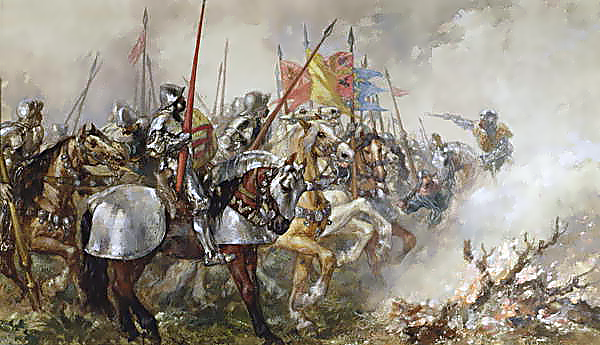
Notable for its use of the English longbow, the Battle of Agincourt was part of the Hundred Years War and was fought between the French and the English, ending in an English victory.
There has been a debate on the ratio of French to English soldiers in this battle. According to French estimates, the French force outnumbered the English by thousands, while English estimates put the French to English ratio at six soldiers to one. Regardless of the exact numbers, one fact is certain – the English were greatly outnumbered by their enemy.
While the French army was eager, they were indecisive and only attacked after the English had fully fortified their position. They made repeated disastrous cavalry charges towards the long pikes that protected the English and Welsh archers.
It’s widely accepted that the armor piercing capability of the English longbows brought victory in this battle. The steel-plated cavalry could not break through the ranks of the English spears, and the arrows punched through their plate armor and killed them in their thousands.
The Siege and Fall of Tenochtitlan [1521]
A decisive occurrence in the Spanish Conquest of Mexico, the siege and fall of the capital of the Aztec Empire was aided by many factors – disease, politics, infighting by the Aztecs and ultimately, betrayal.
Only 350 Spanish conquistadors landed on the Mexican shores, but in less than two years, they were able to subdue and conquer the Aztec Empire, ultimately bringing about the fall of the civilization.
The major factor in their defeat was the ravages of smallpox brought to the Aztecs by the invading Spanish.
The Spanish Armada [1588]
Spain was the 16th-century European superpower, and in her quest to overthrow the rule of Queen Elizabeth I of England she sent her armada, comprised of 130 ships, to invade England.
Unfortunately, though the Spanish Armada was massive, it relied heavily on an outdated way of sea combat and used gunnery only as a precursor to boarding. Furthermore, the fleet’s movement had a specific timeline which left many of the vessels waiting idly around; that or battling stormy sea weather.
In the end, Spain lost about 20,000 men. Most of them perished due to storms and ship worms rather than actual combat with the English.
The So-called Battle of Karansebes [1788]
In this list, this is the only instance of an army defeating itself, with the factors of drunkenness and confusion playing major roles. This could arguably be the worst among the military disasters in this list.
The Austrian army, numbering to as many as 100,000 strong and able men, set camp near the town of Karansebes (now Caransebes which is located in Romania). The vanguard of the army crossed the river to scout for signs of the Ottoman Turks. The Hussars found none. Instead, they spotted a group of Gypsies who offered them alcohol, which they bought and drank.
Soon, a group of infantrymen crossed the river and, upon seeing the drinking party, demanded a share of the alcohol. The drunk hussars refused and set up a makeshift fortification around the barrels. Eventually, a heated argument arose and one soldier fired.
The rest of the army heard the gunfire, and chaos broke out. Thinking that an attack had begun, soldiers began to open fire at every shadow that moved, convinced that the Turks were closing in. Others fled the scene in terror.
It was only two days after this disaster that the real Ottoman Army arrived and found 10,000 dead and wounded Austrian soldiers. They easily took hold of Karansebes.
The Battle of Wabash [1791]
The Battle of Wabash is, arguably, the worst military defeat suffered by America throughout its history.
In this event, American General Arthur St. Clair went ahead on a Midwest expedition despite internal problems within the troops he brought with him – there were mounting discipline difficulties and multiple desertions.
The Native Americans ambushed St. Clair and his group near the Wabash River and everything went downhill from there. St. Clair’s men just hid and fled despite their leader’s desperate and fruitless attempts to rally them.
In the end, out of the 1,000 soldiers who were with him, only 48 men survived.
The Battle of Adwa [1896]
What are the odds that an African nation would defeat a European superpower? We would probably say, “none.” But 1896 was a different story.
It was the year that the Ethiopians defeated the Italians, allowing them to gain their independence as a state, and the defeat was all because of two military mistakes committed by the Italian Army’s leader.
For one, General Oreste Baratieri brought with him an army vastly outnumbered by the Ethiopians. Secondly, his forces brought with them cheap military equipment and insufficient maps.
Baratieri’s men marched through the night, got separated and couldn’t reorganize propely because their maps were useless.
So, the Italians were badly defeated in that battle and were forced to recognize Ethiopia’s independence. Not only that, Baratieri and his men left all of their military equipment behind when they retreated, and the Ethiopians captured this equipment for their own use.
